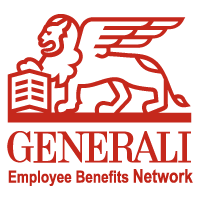How to provide a future-proof global benefits strategy for expats
To ensure a fit for the future global benefits strategy, it is important to understand two things: firstly, the evolution of the expat and secondly the risks now facing companies with a globally mobile population.
Mobility continues to evolve. As it does, it is increasing in both its importance and its ability to have a significant impact on organisational growth and revenue. Geopolitical changes and environmental sustainability are also becoming critical factors, influencing where and how people choose to live and work abroad.
Professionals are increasingly seeking remote work opportunities across borders that suit their lifestyle goals and this, in turn, changes the profile of their insurance needs.
Fluid and boundless
The rise of digital nomadism, fuelled by advancements in technology and a growing acceptance of remote work (since the pandemic), suggests a future where the concept of being an expatriate is more fluid and boundless, allowing individuals to blend travel, work and living in a global mosaic.
For employers and insurance companies, however, this poses some real challenges. Employers that maintain a level of flexibility and agility will be better able to cope with an evolving legislative landscape, increased security risks and perpetual rise of medical inflation that affects the design and costs of global risk plans.
People and risks
The global landscape for expatriates two or more decades ago was markedly different from today. Firstly, the 1990s/early 2000s were vastly less digitised, and characterised by regionally focused economic environments.
Expatriates then, as now, were tempted by lucrative expat packages, which included substantial benefits such as housing allowances, international schooling for children, and generous relocation and travel budgets.
These packages were seen as compensation for the significant adjustments required, in a time when the global mobility landscape was less about lifestyle choice and more about career necessity and financial incentive.
Today, the traditional expatriate with a one-size fits all plan (for expats on long-term assignment) has now evolved into fully integrated mobility management. The latter includes:
- Moving people to jobs, or moving jobs to people;
- Remote working/virtual assignments;
- Cross-functional rotation/lateral moves.
Everything in this new world of integrated mobility management must be carefully managed by HR professionals.
The evolution of mobility management
Internationally mobile employees (IMEs) tend to be more engaged with their overall benefits. They work for companies that hold the same environmental, sustainable and protection agendas as themselves. They also expect agile work design that allows them to move jobs fluidly, that prioritises their physical and mental wellbeing, allows them to flourish in their roles and gives them long-term resilience.
In terms of risk, HR and risk professionals sit at the apex of a balancing act. On the one side, providing fair, equitable and sophisticated benefits to their global workforce. On the other side, managing the growing costs associated with economic challenges, conflict, energy transition, disruptive technologies, talent shortages, widening cyber risks and increasing compliance demands.
A global minimum standard for benefits
Research shows that one of the persisting risks is inflationary pressures on benefit and health costs. Companies must plan for changes to their benefit programs now, while ensuring the right needs of employees are met to promote a thriving and productive workforce.
As of January 2024, almost three-quarters of employers (70%) have a global minimum standard in place for employee benefits, almost double the 36% who said the same in 2019.
As benefit priorities change, multinational companies are accelerating their use of global minimum standards for benefits, adopting a global benefits philosophy, making better use of technology, and designing benefits that better align with employee wants and needs.
The business relevance of benefits is also evolving – according to the same report, 63% of companies are looking to use employee benefits to signpost their company’s purpose and values proposition.
Consolidating risk benefits
Leveraging global rather than local programmes can help to close any coverage gaps and potentially extend coverage to international work from anywhere (global and remote work scenarios).
It’s also a great opportunity for companies to use their employee benefits to signal their company’s purpose and values to customers, investors and external stakeholders, as well as its employee value proposition.
For risk plans, offering (group) life, accidental death and dismemberment, income protection and disability coverages, through a single international solution, can resolve the complexities of dealing with multiple home country policies in a bid to provide the best benefit coverages for IMEs. By consolidating plans, multinational companies can achieve significant value and cost savings.
What can companies do from now on?
- Consider a pricing reviewUtmost Corporate Solutions and Generali Employee Benefits are seeing competitive pricing in several employee benefits markets at present, especially in group protection benefits and pensions. This opens opportunities to counter some of the insurance cost increases.
- Re-evaluate current benefits programmes and strategy
Identify gaps in cover and ensure that current covers are sufficiently targeted and fit for purpose. Improve communications by linking health promotions to specific risks per country and understand cultural and regional nuances and how they impact access to benefits and services across jurisdictions.
- Managing and mitigating health (physical and mental) risks and costs
Consider how proactive (preventative measures such as work design) and reactive services (e.g. EAP) services sit together. For example:
- Manage cost through preventative health and wellbeing products and services;
- Discuss how to drive value from your suppliers;
- Are you paying for the same services twice, e.g. early intervention services from both your health provider and group risk insurer;
- The hidden cost benefits and savings of extending cover to family members;
- Addressing ageing workforce risks;
- Using data insights to identify employee and country-specific risks across your organisation and aligning with occupational health services.
- Multinational pooling or captives for cost efficiency and better control of risks
These global employer-funded options can be powerful tools for multinational organisations in managing some of the risks and costs, as discussed earlier.
- Sustainability
Use environmental, social, and governance (ESG) as a competitive differentiator.
Disclaimer: All information contained herein represents the views and opinions of the author as at the date of writing and is provided for general information only. Nothing herein constitutes or is intended to constitute financial or other form of advice and no individual should rely upon the information provided in making a specific investment decision without first seeking independent professional advice.
Supplied by REBA Associate Member, Generali Employee Benefits Network
Generali Employee Benefits' solutions are to protect and enhance the wellbeing of their workforce.








